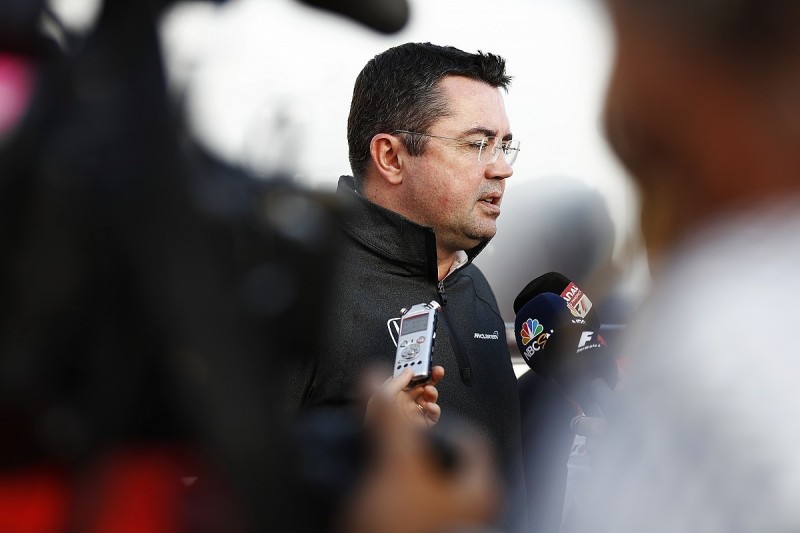F1 testing 2017: McLaren chassis fears 'like fake news' - Boullier
McLaren says that trackside impressions its 2017 car is nervous are Formula 1's equivalent of 'fake news', as it blamed Honda's driveability for the issues

Fernando Alonso and Stoffel Vandoorne were observed having a difficult time manhandling the MCL32 during the first week of testing, with Autosport's technical consultant Gary Anderson saying "this is not just a very good chassis being let down by the engine".
That impression countered comments from the team that the new chassis had delivered all that was expected of it.
Asked to explain the discrepancy between the team comments and what was happening on track, Boullier said that the characteristics of Honda's new engine were having a big impact.
"Well, strangely, the car reacts well to any changes that we have asked. The drivers on that point are quite happy," he said.

"I read some comments [about handling difficulties in Turns 1/2/3] and they are a bit like [US President Donald] Trump's 'fake news' - because it is not only chassis.
"Remember these engines are hybrid engines, which means when you are very early back on throttle you have electrical power which is on/off.

"And then you have a turbo as well at the back - so depending on your driveability there could also be some issues.
"We had some driveability issues, which means when you are back on the power you lose the back of the car so the car looks nervous. But there is nothing wrong.
"Driveability issues, old tyres, let's say, warming up the tyres is not good enough.
"But still the car spec here is launch spec, we do try little bits, but we will not run the full spec. The full spec will be run in Australia."
TEST PROGRAMME COMPROMISED
Although encouraged by the early chassis impressions, Boullier did admit that the lack of mileage the team has had in testing - allied to having to run in low-power engine modes because of reliability concerns - meant it was not ideal to get a proper gauge on where it stood.
"If you are not running fast enough, you do not put the right energy into the tyres, you don't put the right energy in the brakes of the car, and your ride height targets are different," he said.
"There are a lot of consequences from running 15km/h or 18km/h slower in a straightline.
"But still, we make the most of the data we can gather just by running the car, and that is what we want to see.
"This is to make sure that the correlation with the simulation or back in Woking is good, which then allows us to keep the same process to design and develop the car.
"But it would be easier if we had the same speed as the others, because then you have a better understanding on some different factors."
Be part of the Autosport community
Join the conversationShare Or Save This Story
Subscribe and access Autosport.com with your ad-blocker.
From Formula 1 to MotoGP we report straight from the paddock because we love our sport, just like you. In order to keep delivering our expert journalism, our website uses advertising. Still, we want to give you the opportunity to enjoy an ad-free and tracker-free website and to continue using your adblocker.



















Top Comments